From the evolution of human beings, toilets have turned into a basic need in our everyday life as it’s a part of our hygiene, cleanliness, safety and affects our mental health.
Nowadays, people are more likely to use western or sitting toilets and it has become a common issue like legs leaving residue on toilet seats. Does this ever happen to you? Isn’t it bothering you?
Well, there’s no need to freak out! In this article, we will guide you on how to get rid of it and keep the toilet seat dirt-free at the same time without any discomfort.
| Factors | Residue on Toilet Seat | Prevention and Solutions |
|---|---|---|
| Sweating | May contribute to residue | Wipe the seat after use |
| Oily Skin | Increases likelihood | Maintain personal hygiene |
| Moisturizers | Can transfer to seat | Use disposable toilet seat covers |
| Inadequate Cleaning | Builds up residue | Regularly clean toilet seats |
| Bacterial Infections | Risk of infection | Practice proper handwashing |
| Fungal Infections | Risk of infection | Shower regularly and keep legs clean |
One of our articles –Automatic Toilet Bowl Cleaners.
Understanding the Residue on Toilet Seats
The residue left by our legs on the toilet seat is typically a combination of sweat, oils, and skincare products.
These substances can accumulate over time and create an unpleasant and unhygienic environment. It’s essential to identify the underlying causes to effectively tackle this problem.
Causes of Legs Leaving Residue on Toilet Seat
Sweating
One of the primary causes of residue on toilet seats is sweating. When we sit on a toilet seat, especially during hot weather or physical exertion, our legs may sweat. This sweat, along with other factors, can contribute to the residue left behind.
Oily Skin
People with naturally oily skin may experience a higher likelihood of leaving residue on the toilet seat.
The excess sebum produced by the skin can mix with sweat and contribute to the sticky or greasy residue.
Moisturizers and Lotions
Using moisturizers, lotions, or oils on the legs can also lead to residue on the toilet seat. These products often contain ingredients that can transfer onto the seat and create a sticky residue.
Inadequate Cleaning
Insufficient cleaning of toilet seats can exacerbate the issue of residue. If the seats are not regularly cleaned or sanitized, any residue left behind can build up and become more challenging to remove.
Health Concerns Associated with Residue on Toilet Seats
The presence of residue on toilet seats can pose potential health risks. Here are some of the concerns associated with this issue:
Bacterial Infections
Residue on toilet seats can harbor bacteria, including E. coli and Staphylococcus aureus. These bacteria can lead to infections if they come into contact with any open cuts, sores, or mucous membranes.
Fungal Infections
Moisture and warmth provide an ideal environment for fungi to thrive. If the residue on the toilet seat contains fungi such as Candida, it can contribute to fungal infections, particularly in individuals with compromised immune systems.
Legs Leaving Residue On The Toilet Seat: Why Does It Happen?
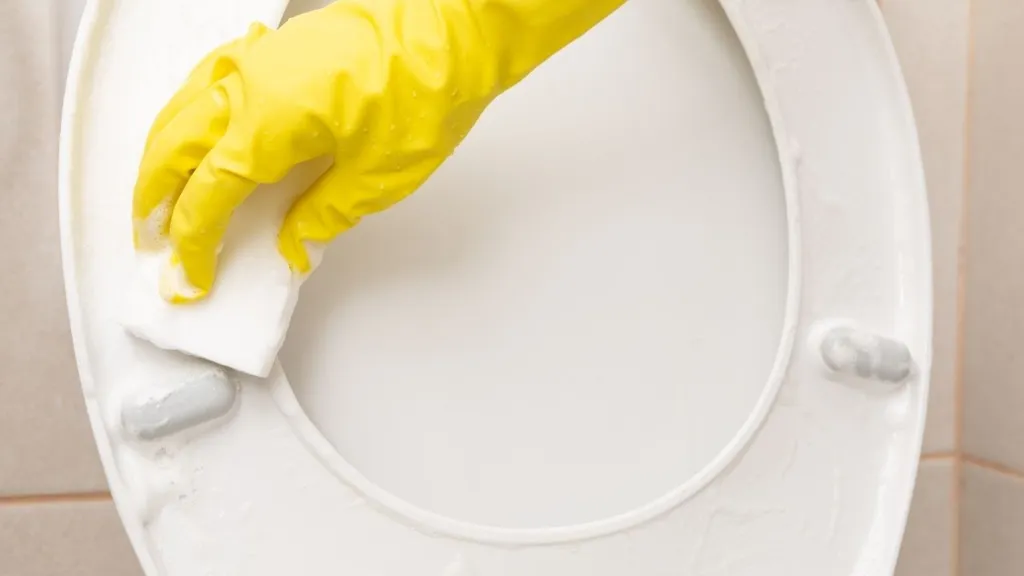
There are specific reasons behind leaving residue on the toilet seats because of legs. Not all people shed in the toilet, but everyone has to suffer for it. Now, why does this unwanted thing happen? Let’s find out!
Reason 1: Due To Dermatitis Or Other Skin Concerns
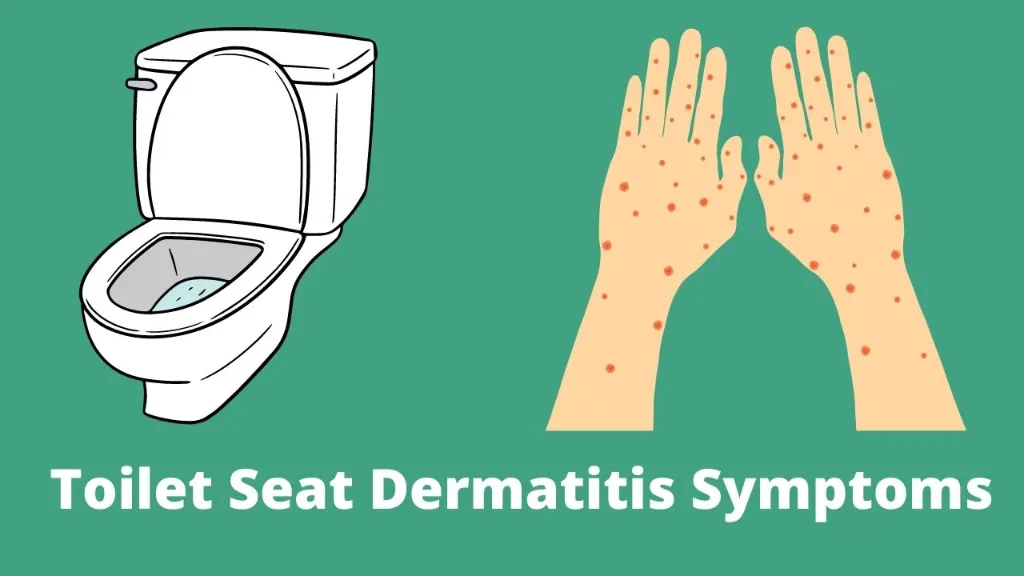
Everyone’s skin is different. Many people develop congenital skin diseases or are influenced by environmental changes. It also may occur due to any bacterial infection or lack of proper hygiene routine, especially in the thighs, butt, and groin areas.
While using the toilet, these areas of your leg come closer to the surface and leave residue on a toilet seat. Besides, medicines are used to treat skin diseases like- eczema, allergy, ringworm, abscess, sunburn, etc. can also leave spots on your toilet seat while used in a thick layer.
Reason 2: Lack Of Exfoliation
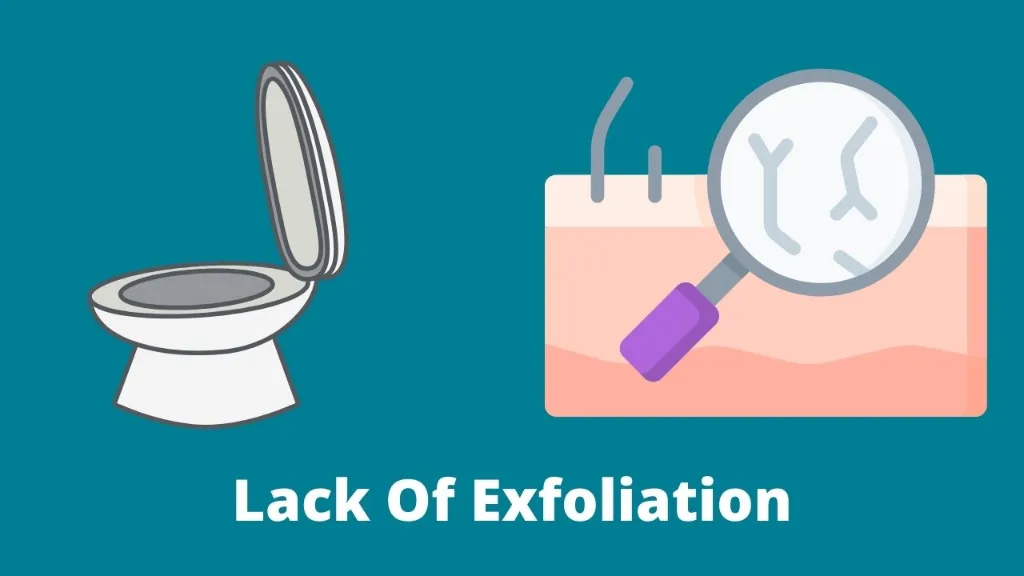
By birth, human skin has texture. It renews itself by shedding and leaving the extra dead cells on their own. However, people with dehydrated skin build up dead cells more than average, which makes the skin dry and dehydrated.
If your skin is not exfoliated well enough, whenever your body comes in contact with the toilet seat, it leaves spots and residue.
Reason 3: Extreme Oily Thigh
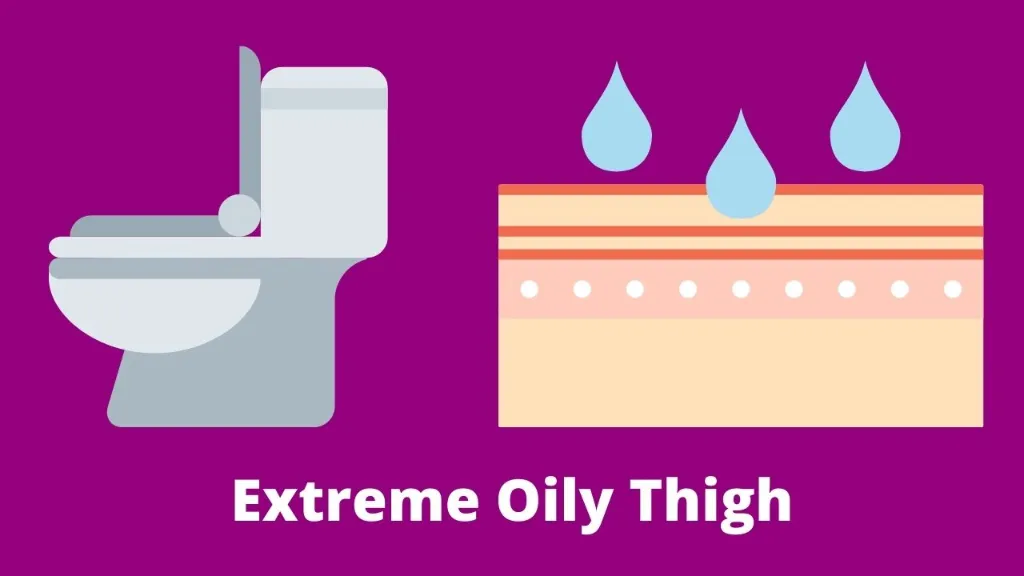
There are different skin types seen in people- normal, oily, dry, and combination. But unfortunately, people with oily skin are more prone to attract pollutants and get sticky more quickly than usual.
Moreover, these oils are produced from sebaceous glands that are present all over your body and rapidly get stimulated by excessive sweating and many other factors. Thus how people with oily thighs may leave residue on the toilet seat.
Reason 4: Using Harmful Chemicals Or Wrong Skincare Products

Using powerful exfoliators or harsh chemical skincare products might damage the skin barrier, leading to further deadly skin diseases.
As a result, skin gets irritated, discharges fluid, and sometimes burns out, which sticks to the toilet seat and leaves residue. It might be undesirable, but others may find it disturbing.
Legs Leaving Residue On Toilet Seat: How To Get Rid Of It?
It’s time to get rid of the residue that is left on the toilet seat because of the legs. Follow the steps accordingly.
Method 1: Keep Your Toilet Sanitized
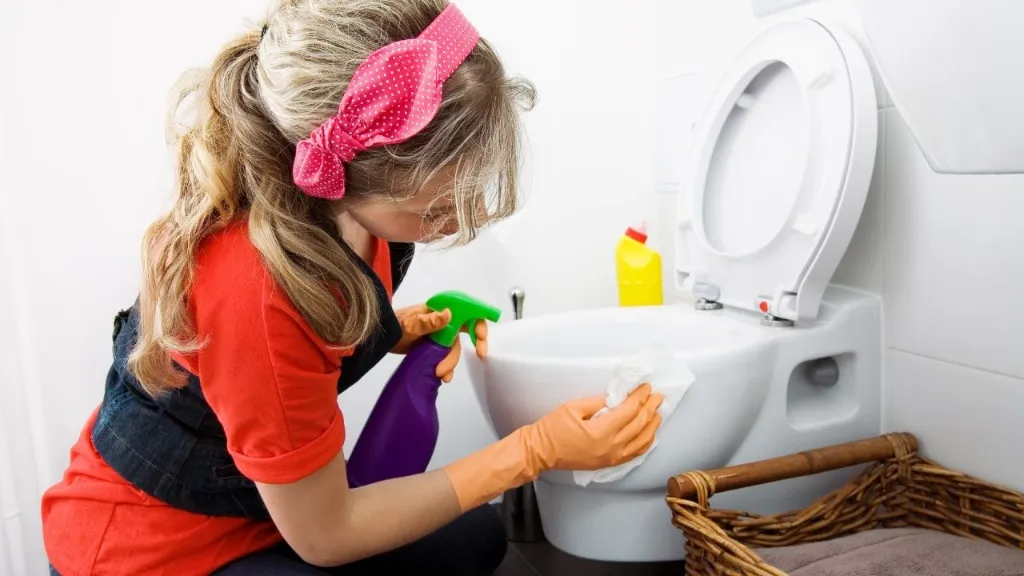
Exactly, you’ve heard it right! Who doesn’t want a fresh feel while using something necessary for one’s day-to-day life?
A clean washroom can help prevent the spreading of harmful germs, bacteria, and many infectious diseases. It also creates positivity and reflects your personality.
To clean your toilet, you’ll need-
- Disinfectant spray
- Toilet cleaning brush
- One time hand gloves
- Paper towel
Process
- First, take your cleaning gloves and spray the disinfectant thoroughly. You can also use other specialized cleaning products that are available nearby. Disinfectant wipes can be an alternative solution too.
- For even better results, we suggest you use cleaning mops or brushes with bristles and scrub the toilet seat to remove any spot or residue left.
- Finally, wipe down the remaining stains with a napkin or paper towel if it’s needed.
Follow this method afterwards whenever you use the toilet to remove leg residue and bring life to it.
Method 2: Proper Exfoliation
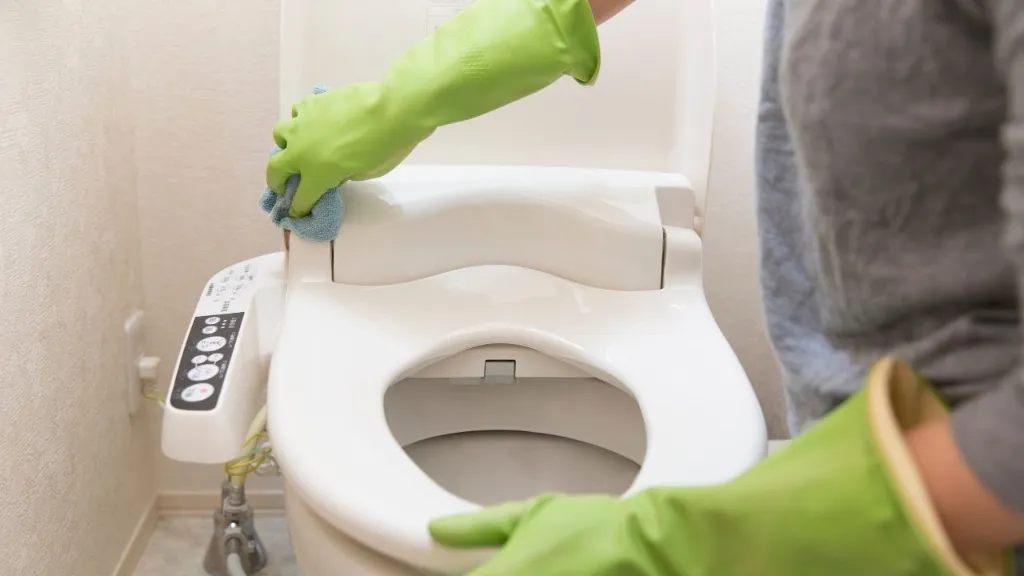
Exfoliators should be a part of everyone’s skincare routine to clean up the pores and avoid excess skin build-ups, whether you are men or a woman. It can also prevent harmful bacterial skin diseases, fight unwanted germs on the skin surface, and reduce leaving leg residue on the toilet seat.
But it will be helpful if you choose the exfoliator according to your skin type and skin concerns. Mild exfoliators containing-
- Glycolic acid
- Lactic acid
- Alpha Hydroxy Acid (AHA)
- Beta Hydroxy Acid (BHA)
They are preferable to use as it removes dead cells without irritating the skin barrier, preventing legs from leaving dirt on the toilet seat.
Your skin can also become dry and itchy during pregnancy or due to any environmental change. Keep your skin moisturized and hydrated, and follow a good skincare routine according to your skin type to see further improvement.
Method 3: Using Specialized Tools

Different kinds of toilet essentials are found in local or grocery stores, such as squatty potty. It’s a tool built to treat constipated patients to improve peristalsis/bowel movement.
Did you know it can also be used to prevent leg residues on the toilet seat too? Yes! When you tend to use this kind of tool, your skin comes in less contact with the toilet seat. Less connection means fewer spots and residue!
Method 4: Try Replaceable Seat Covers
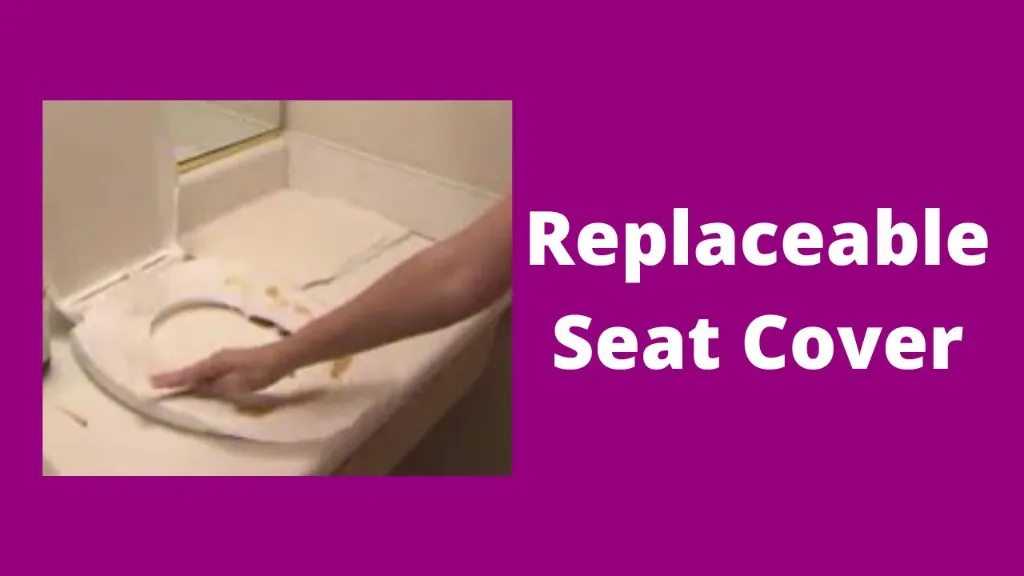
Disposable toilet seat covers can be an excellent option for those suffering from severe skin issues for a long time.
As they are leaving leg residue on the toilet seat no matter what, others may find it disgusting. They can come in handy wherever you are and see them in any nearby store.
Method 5: Maintain Strict Personal Hygiene
Hygiene and health are entirely related to each other. Unfortunately, many people are still unaware of it and maintain a poor hygiene routine. Following a basic routine not only helps to remove bacteria and impurities but also improves your health boosts your immunity and builds up a healthy mindset.
Another thing to keep in mind is to never share other people’s daily essentials, especially towels, clothes, shoes, innerwear, etc. as germs and many skin diseases can easily spread.
Related Questions
[faq-schema id=”9298″]
Conclusion
As can be seen, having problematic skin might be annoying. All you can do is find out the specific reason why your legs are leaving residue on the toilet seat. Moreover, follow all the methods to get rid of this.
We’re happy to help you out! Have you tried any of these yet? Let us know if you did!




![How to Remove Crystallized Urine [Explained]](https://homepander.com/wp-content/uploads/2022/02/How-To-Remove-Crystallized-Urine.jpg)
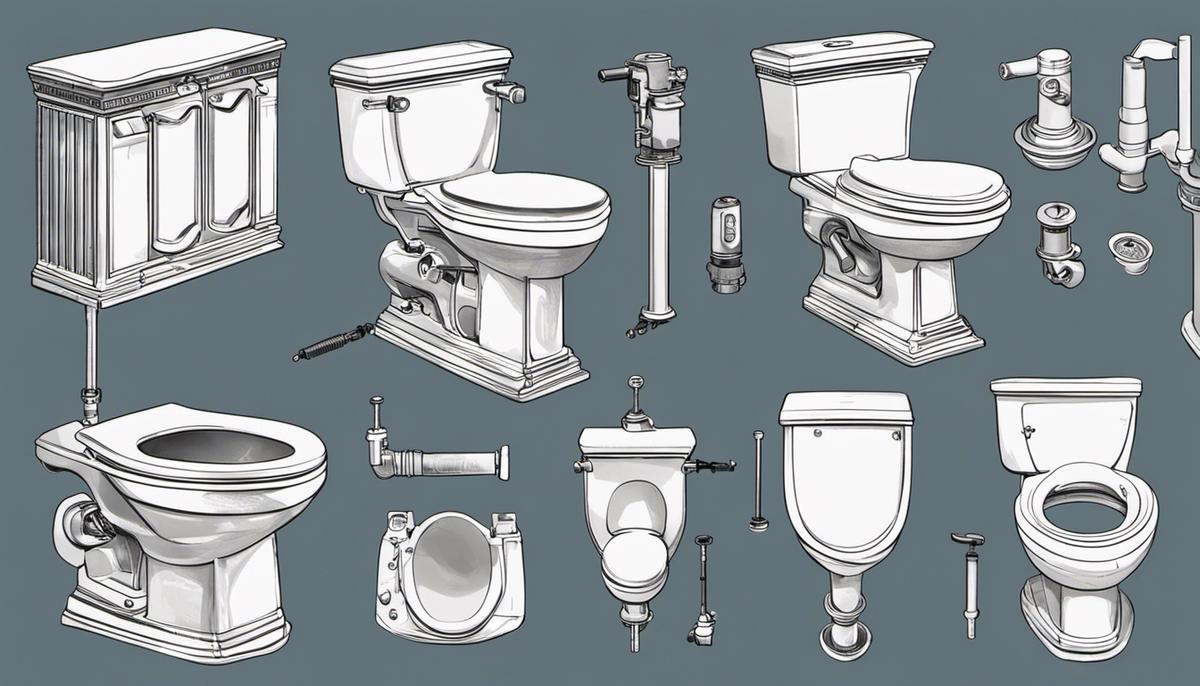
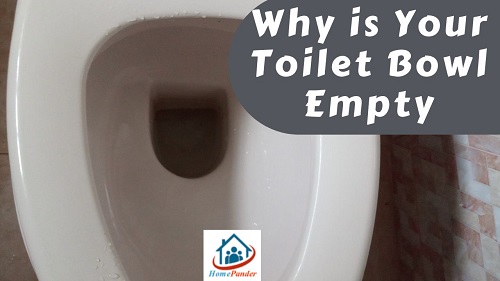




![How To Clean Dark Grout That Has Turned White [5 Easy Ways]](https://homepander.com/wp-content/uploads/2021/12/How-To-Clean-Dark-Grout-That-Has-Turned-White.webp)